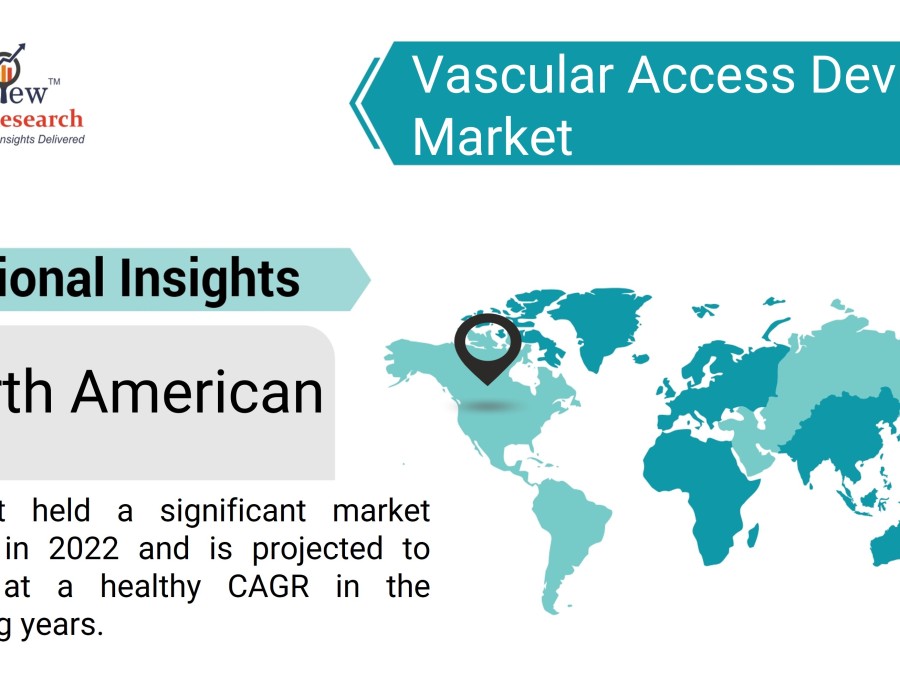The vascular access device market is experiencing robust growth, fueled by various factors including technological advancements, an aging population, and the rising prevalence of chronic diseases. vascular access devices, such as central venous catheters, peripheral intravenous catheters, and dialysis catheters, are indispensable in modern healthcare for the administration of medications, fluids, and nutrients, as well as for blood sampling and dialysis. This article explores the key drivers and opportunities contributing to the market's expansion.
According to Stratview Research, the vascular access device market was valued at USD 4.26 billion in 2022 and is likely to grow at a CAGR of 7% during 2023-2028 to reach USD 6.41 billion in 2028.
Key Drivers of Market Growth
Technological Advancements
Continuous innovation in vascular access device technology is a major growth driver. The development of antimicrobial-coated catheters has significantly reduced the risk of infections, a common complication associated with vascular access device use. Additionally, improvements in catheter materials, such as biocompatible and durable polymers, have enhanced patient comfort and device longevity. The adoption of ultrasound-guided catheter insertion techniques has also improved placement accuracy and safety, further driving market growth.
Aging Population
The global increase in the aging population is a critical factor contributing to the demand for VADs. Older adults are more susceptible to chronic conditions such as cardiovascular diseases, diabetes, and kidney disorders, which often require long-term vascular access for treatment. As the elderly population grows, so does the need for vascular access devices, supporting market expansion.
Rising Prevalence of Chronic Diseases
The escalating incidence of chronic diseases necessitates the use of vascular access devices for ongoing treatment. Conditions like cancer, which require frequent chemotherapy, and chronic kidney disease (CKD), which often involves dialysis, drive the demand for central venous catheters and dialysis catheters. The need for long-term intravenous therapy in managing chronic illnesses significantly boosts the vascular access device market.
Minimally Invasive Procedures
The healthcare industry's shift towards minimally invasive procedures is also propelling the vascular access device market. Minimally invasive techniques for catheter insertion reduce patient discomfort, lower the risk of complications, and shorten recovery times. This trend has increased the adoption of vascular access devices in various medical settings, from hospitals to outpatient clinics.
Opportunities for Market Expansion
Emerging Markets
Developing regions offer substantial growth opportunities for the vascular access device market. Improved healthcare infrastructure, increased healthcare spending, and growing awareness about advanced medical treatments are driving demand in these areas. Government initiatives to enhance healthcare access and affordability are also expected to bolster market growth in emerging economies.
Patient Safety Innovations
Future advancements in vascular access device technology are likely to focus on enhancing patient safety by reducing complications such as infections, thrombosis, and catheter occlusions. Research and development efforts aimed at creating safer and more effective devices will continue to drive market growth.
Personalized Medicine
The rise of personalized medicine presents a significant opportunity for the vascular access device market. Customizing vascular access devices to meet the specific needs of individual patients, considering factors such as age, disease state, and vascular anatomy, can optimize treatment outcomes and improve patient experiences.
Sustainability and Eco-Friendly Solutions
As sustainability becomes a priority in healthcare, the development of eco-friendly vascular access devices is gaining traction. Manufacturers are increasingly focusing on creating devices with biodegradable materials and sustainable manufacturing processes, addressing environmental concerns while meeting medical needs.
Conclusion
The vascular access device market is poised for substantial growth, driven by technological advancements, an aging population, and the rising prevalence of chronic diseases. Emerging markets, innovations in patient safety, personalized medicine, and sustainable solutions present significant opportunities for market expansion. As the healthcare landscape continues to evolve, stakeholders must leverage these drivers and opportunities to meet the growing demand and improve patient care outcomes.






Comments